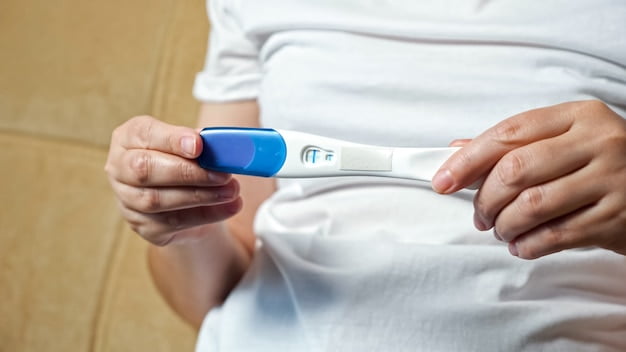
Contents
- 1 Introduction
- 2 Understanding Dye Run Pregnancy Tests
- 3 How Does a Dye Run Pregnancy Test Work?
- 4 Factors Affecting Dye Run Test Accuracy
- 5 Step-by-Step Guide to Using a Dye Run Pregnancy Test
- 6 Comparing Dye Run Tests with Traditional Pregnancy Tests
- 7 When Can You Take a Dye Run Pregnancy Test?
- 8 Common Misconceptions About Dye Run Tests
- 9 Interpreting the Results: Positive or False Positive?
- 10 Dealing with False Positives and False Negatives
- 11 Pros and Cons of Dye Run Pregnancy Tests
- 12 Consulting a Healthcare Professional
- 13 DIY Alternatives to Dye Run Pregnancy Tests
- 14 The Evolution of Home Pregnancy Tests
- 15 Ensuring Test Accuracy: Tips and Recommendations
- 16 Conclusion
- 17 FAQs
Introduction
When it comes to early pregnancy detection, there are several methods available, and one of the options gaining popularity is the dye run pregnancy test. This article delves into what a dye run pregnancy test is, how it works, its accuracy, and important considerations for those considering using it.
Understanding Dye Run Pregnancy Tests
Dye run pregnancy tests, also known as “dye-steal” tests, are a type of home pregnancy test that works by utilizing a wicking process to detect the presence of the human chorionic gonadotropin (hCG) hormone. This hormone is produced shortly after a fertilized egg attaches to the uterine lining, making it a reliable indicator of pregnancy.
How Does a Dye Run Pregnancy Test Work?
Unlike traditional pregnancy tests that display lines or plus signs, dye run tests involve the migration of a colored solution across a test strip. This solution reacts with the hCG hormone and causes a noticeable color change, indicating a positive result. The dye run test’s unique mechanism sets it apart from other tests on the market.
Factors Affecting Dye Run Test Accuracy
Several factors can influence the accuracy of a dye run pregnancy test, including the concentration of hCG in the urine, the test’s sensitivity, and the timing of the test. Users should carefully follow the instructions provided with the test kit to achieve the most accurate results.
Step-by-Step Guide to Using a Dye Run Pregnancy Test
- Choose the appropriate test kit and read the instructions thoroughly.
- Collect a urine sample in a clean, dry container.
- Dip the test strip into the urine sample for the specified duration.
- Place the strip on a flat surface and wait for the colored solution to migrate.
- Interpret the results according to the manufacturer’s guidelines.
Comparing Dye Run Tests with Traditional Pregnancy Tests
While dye run tests offer a unique approach to pregnancy detection, traditional tests are often preferred due to their ease of use and familiarity. Dye run tests may be a viable alternative for those seeking a different testing experience.
When Can You Take a Dye Run Pregnancy Test?
Dye run tests can typically be taken a few days before a missed period, similar to other home pregnancy tests. However, waiting until after a missed period can yield more accurate results.
Common Misconceptions About Dye Run Tests
There are misconceptions that dye run tests are less reliable than traditional tests. In reality, both types of tests are designed to detect hCG and have their own strengths and limitations.
Interpreting the Results: Positive or False Positive?
A positive dye run test result is indicated by a noticeable color change on the test strip. However, it’s essential to remember that any test, including dye run tests, can occasionally produce false positives. Confirming results with a healthcare professional is crucial.
Dealing with False Positives and False Negatives
False positives can occur due to factors such as medication or certain medical conditions. False negatives might result from taking the test too early. If results are unclear or unexpected, consulting a doctor is advisable.
Pros and Cons of Dye Run Pregnancy Tests
Pros:
- Unique testing experience
- Early detection potential
Cons:
- Potential for user error
- Limited availability compared to traditional tests
Consulting a Healthcare Professional
While home pregnancy tests provide convenience, it’s essential to consult a healthcare professional for confirmation and guidance, especially if results are uncertain or additional information is needed.
DIY Alternatives to Dye Run Pregnancy Tests
In cases where commercial tests are unavailable, there are DIY alternatives using household items. However, these methods may lack the reliability and accuracy of commercial tests.
The Evolution of Home Pregnancy Tests
From simple indicator tests to the innovative dye run tests, the evolution of home pregnancy tests reflects advancements in science and technology, providing more options for early pregnancy detection.
Ensuring Test Accuracy: Tips and Recommendations
- Follow instructions precisely
- Test with the first morning urine
- Consider confirming results with a different test
- Seek medical advice for unusual or unclear results
Conclusion
Dye run pregnancy tests offer a novel way to detect early pregnancy by utilizing a unique color migration mechanism. While they provide an alternative testing experience, users should be aware of their strengths, limitations, and the importance of seeking medical guidance when needed.
FAQs
Q1: Are dye run pregnancy tests as reliable as traditional tests? A1: Both tests have their strengths and limitations, so it’s essential to follow instructions and consult a healthcare professional if in doubt.
Q2: Can medication affect dye run test results? A2: Yes, certain medications can impact test results. It’s recommended to disclose any medications being taken to a healthcare professional.
Q3: How soon can I take a dye run pregnancy test after a missed period? A3: While it can be taken a few days before a missed period, waiting until after the missed period can provide more accurate results.
Q4: What should I do if I get a positive dye run test result? A4: It’s important to confirm the result with a healthcare professional and discuss the next steps.
Q5: Are there any DIY alternatives to dye run pregnancy tests? A5: While some DIY methods exist, commercial tests are generally more reliable and recommended for accurate results.




